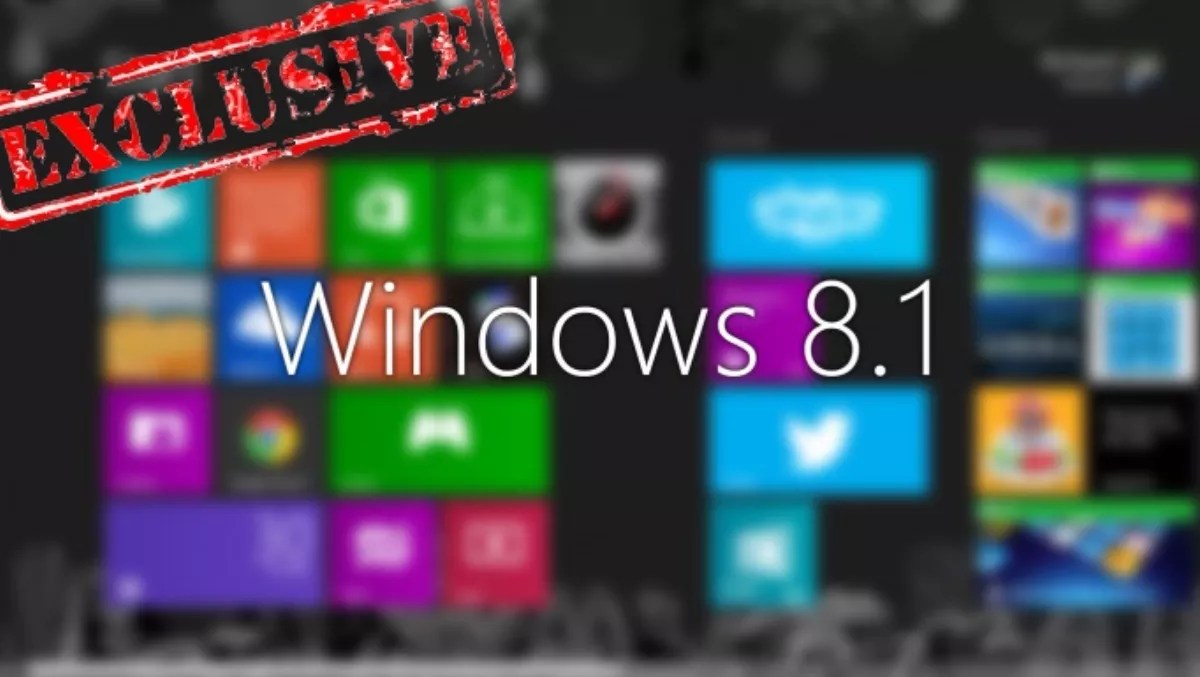
Microsoft NZ: 'Windows 8.1 is Windows 8 made better'
"Windows 8.1 is Windows 8 made better."
That's the view of Dean Edwards, Windows Business Group Manager for Microsoft New Zealand, who believes Windows 8.1 represents a new era for the software giant.
Kiwis were among the first users to get their hands on the revamped operating system on October 18, but now the dust has settled, it's time to get serious about Redmond's latest offering.
Taking time out from his busy schedule, Edwards sat down with TechDay.com for a detailed run-through of Windows 8.1, highlighting why consumers should get on board as the holiday season approaches.
The Windows 8.1 Product Guide boasts 'endless entertainment options for users', what are the key features consumers should look out for?
From an entertainment perspective Windows 8.1 adds some all-new apps that are available right from the Start Screen, plus many other in-built apps get a major makeover.
For example, there are beautiful new apps for Food and Drink (you can even browse through recipes in hands-free mode - great if you are in the kitchen with hands covered in flour!), and a new Health & Fitness app featuring exercise routines, videos, health and nutrition features and more.
Plus apps like Photos and Xbox Music receive major overhauls - now you can edit photos; and stream music for free, create radio stations, and purchase and download songs and albums.
The Windows Store has also been redesigned, making it much easier to find great games, and other apps you love.

How can consumers make Windows 8.1 unique to their needs and interests?
It is now much easier to customise Windows 8.1 to how you want it. Use your favourite photo as your Start Screen background, or pick from a near limitless set of background colours, accent colours, and background patterns.
You can resize tiles in four configurations - from very small to very large - and it is now much easier to move tiles around and create new groups on your Start Screen.
How will the return of the Start Button enhance the experience for users?
Microsoft received lots of feedback that users liked to see a visual cue to help them get from the desktop back to the Start Screen, so the Start icon on the desktop has returned!
In addition desktop lovers can, if they choose, boot straight into desktop when starting up (avoiding the Start Screen altogether).
Windows 8 contained no built-in help section, how important is its introduction in Windows 8.1?
There are two important enhancements in Windows 8.1 to help new users. Firstly, on-screen “tips” appear when first performing common actions like swiping to switch between apps (they only appear the once).
And secondly, Microsoft has added a new Help+Tips app (available right from the Start Screen) which does exactly what the name suggests - provides help and tips for users new to Windows 8.1, including screen grabs and instructional videos.

Touted as faster and more stable than IE 10, how will IE 11 transform user's experience online when it comes to streaming movies, music and downloading content?
Windows 8.1 now ships with Internet Explorer 11, which offers a number of enhancements over Internet Explorer 10 for improved web browsing, including:
Performance improvements - Pages load faster and you can now switch between tabs faster.
Sync between PCs and devices - With IE 11, your history, Favorites, open tabs, and settings are synced across all of your Windows 8.1 PCs through your Microsoft account.
Unlimited tabs - Where IE 10 is limited to having just 10 tabs open a a time, IE 11 supports unlimited open tabs.
Side-by-side tabs - Now, you can browse tabs side-by-side in IE 11: Simply snap IE and then right-click a link, Favorite or whatever and choose Open in New Window. And with high res displays, you can display three, four, or more tabs side by side.
Better security - Internet Explorer 11 now scans binary extensions like ActiveX before they load, using the built-in antimalware engine.
Check back to TechDay.com on Thursday for Edward's take on the Windows App Store, Skype and Microsoft's hardware devices.

